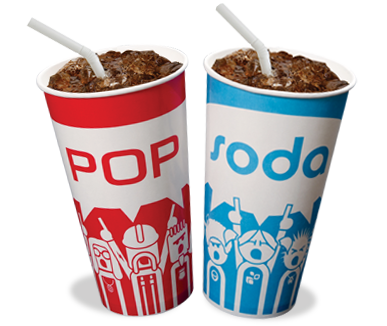“Aym t’inkin’ ye tol’ me, didna ya, dat dere be tips ‘n’ tricks ta doin’ de dialect da wey ye shud in buks?”
Just in case you haven’t figured it out, here’s the translation of this bit of brutal brogue: “I’m thinking you told me, didn’t you, that there are tips and tricks to doing dialect the way you should in books?”
There are, indeed. And the first line of this blog is the perfect example of what you don’t want to do, because that line, my friends, is dialect gone bad.
Less is More
Ask any two writing pros how much dialect is too much, and you’ll likely get two completely different answers. I fall firmly in the Less is More camp: Use enough dialect to season the character and story, but not so much that you overwhelm and/or confuse your reader.
My hubby, Don, loves biscuits and gravy, but only when there’s just a touch of pepper. Trouble is, most restaurants seem to have decided that the more pepper the better, which ruins the taste for Don. Likewise, many readers have sensitive “palettes,” if you will, for dialect. So my vote is to err on the side of moderation.
We talked with Susan May Warren last week about using regional terms or phrases. But another way to sprinkle in dialect is to use a few words from the character’s native language. Check out places on the Internet to translate from English to foreign languages, and plug in common words, such as yes, no, please, baby, mother, okay, very, and so on. Many Americans will recognize these simple words, even in another language:
Oui rather than yes (French)
bairn rather than baby (Scottish)
nei rather than no (Norweigian)
gracias rather than thank you (Spanish)
Worried that your readers won’t know even that little bit of the language? Then use it in a context that makes the meaning clear:
“Oui, of course I agree.”
“Congratulations on the birth of you lovely bairn.”
“Nei, I will not do as you ask.”
“You saved my life! Gracias!”
Get it right
If you’re going to use dialect, be sure you research the language—words, grammar/accents, and sentence structure—so that what you put on the page is authentic, not stereotypical. For example, in the French language, nouns are masculine or feminine. So you could have a French character refer to a masculine noun as follows: “My fish, he is bigger than yours.” (Poisson, French for fish, is masculine.) Or “My Monday, she is full. I have no time for a meeting.” (lundi, French for Monday, is feminine.)
Consider placement of modifiers, how questions are asked, how sentences are structured, and so on. Another example would be if you have a character who loves Latin, but always says it in English. The sentence structure is more archaic, so In Vino Veritas becomes “In wine, there is truth,” which is the literal translation. But it would be more common to give the translation in a more familiar structure, such as: “The truth comes out when you drink.”
Be Consistent
Once you’ve decided what foreign words you’re going to use, be consistent. If you look back at my “lovely” first line, you’ll see I used both ye and ya for you. While folks, in real dialogue, may use the two pronunciations interchangeably, when you’re writing dialect it’s better to pick one alternative for an English word and stick with it.
It will help, too, if you keep a style sheet for the dialect, both to keep you straight and to send to your editor/copyeditor.
Give the Reader’s Eye—and Brain–an Anchor
It’s long been a standard that when Americans read, we read what we expect to be there. I’m sure you’ve seen the following before:
Aoccdrnig to a rscheearch at an Elingsh uinervtisy, it deosn’t mttaer in waht oredr the ltteers in a wrod are, the olny iprmoetnt tihng is that the frist and lsat ltteers are in the rghit pclaes. Tihs is bcuseae we do not raed ervey lteter by itself, but the wrod as a wlohe.
(According to research at an English university, it doesn’t matter in what order the letters in a word are, the only important thing is that the first and last letters are in the right places. This is because we do not read every letter by itself, but the word as a whole.)
It’s amazing what the mind can interpret on the page, as long as you anchor what you’ve written in something familiar. A great tool for doing this is to transliterate foreign words—too write them in as they sound in English. So let’s say you’ve got a Russian character speaking to an American. You can use the transliterated form of common Russian words (writing them in as they sound in English), then let your listener give us the pronunciation:
“You want to live, you come with me, ponimayu?”
Pony my you? I looked at Max and frowned.
He shrugged. “He’s asking if you understand.”
Well, why didn’t he just say that? I nodded. “Yeah. Pony…whatever. I get it.”
Likewise, when you write accents, make sure you leave enough of the word for the reader to understand it without having to think. Dialect that adds depth is great. Dialect that bounces your reader out of the story…not so much. So rather than doing what I did in my first sentence, aim for something more along the following lines:
“I’m thinkin’ ye told me that there be tips ‘n’ tricks to writin’ dialect the way ye should in books?”
Jargon Is Dialect, Too
Foreign languages aren’t the only place to look for dialect. Consider the following:
“Okay, you’ve got to kill the widows and orphans and keep the text from bleeding in the gutters.”
No, this isn’t a serial killer talking about his next victim. It’s typesetting/publishing speak. Most professions, hobbies, interests have a language all their own. Think about law enforcement, tech speak, math speak, church speak…and on and on it goes. Whatever background and involvements you give your primary characters, make sure you learn the appropriate lingo and drop bits of it in here and there.
So, when it comes to dialect of any kind, remember that the key is to incorporate just enough to season the character’s speech and add depth, but not so much you overwhelm the story or the reader. When you use it sparingly, strategic dialect will draw your reader deeper into the story and character, and add just the right touch of authenticity.
See also:



